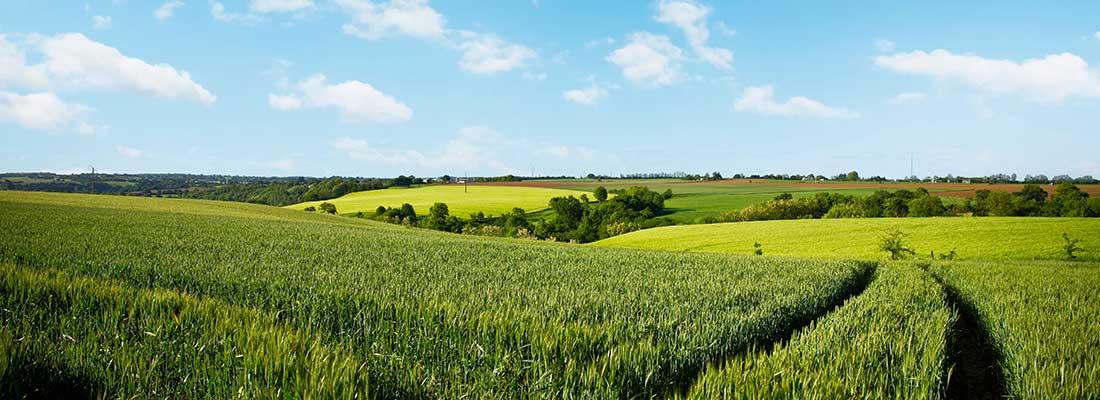Agroecology Reading time 3 min
Re-allocating Common Agricultural Policy payments to speed up agroecological transition in the EU
The current payment structure for organic farming and agri-environment-climate measures under the European Union’s CAP has not led to the anticipated sustainable transformation of agricultural practices. A study using French farming data has demonstrated that a budget-neutral transfer between funding routes could be the solution, doubling the adoption rates for environment-friendly contracts.
Published on 15 September 2025

Since the 1990s, the European Union’s Common Agricultural Policy has incentivised environment-friendly agricultural practices through two main contractual instruments: agri-environment-climate measures (AECMs) and support for organic farming (OF). However, these green measures have struggled to achieve any major transformation in production methods, given the fundamental imbalance between the funds allocated under the two CAP pillars. Under the first, direct income support payments are made by the hectare, with few restrictions imposed on agricultural practices. Meanwhile, the second, more targeted pillar, provides funding for AECMs and organic farming through the voluntary participation of farmers. In 2019, 69% of the CAP budget was disbursed through direct payments, while just 8.6% went towards AECMs, organic farming support and Natura 2000 sites combined. In 2020, just 13% of Europe’s utilised agricultural area (UAA) was covered by AECMs, and only 6% received OF support.
Given the current state of natural habitat degradation and biodiversity decline in Europe, and faced with the 25% target set for organic agricultural land by 2030 under the European Green Deal, the time has come for a rethink on the design of the CAP and its instruments. Should more funds be made available for such environmental contracts, or should the existing budget allocation simply be rebalanced? A French research team has explored the latter option, making use of data from RICA, the French farm accountancy data network.
The team modelled what might happen if some of the payments under the first pillar were transferred gradually to the second. The study used a farm-based behavioural model that calculated farmers’ likely participation in an environmental contract as a function of their farm business profiles and the nature of the proposed support. This type of modelling allowed the impacts of different budget scenarios on the real-life decisions of farmers to be evaluated.
Transferring 15% of direct payments would double the adoption rate for green contracts.
The results speak for themselves: a transfer of 15% of the direct payment budget – the maximum permitted by current regulations – would raise participation in AECMs from 11% to 23% of farms, and the take-up of support for organic farming from 7% to 15%. A transfer of 23% would be enough to meet the Green Deal target of 25% of agricultural land under organic production by 2030.
At the same time, the shift in the economic balance between direct payments and environmental incentives achieved by this budgetary transfer would appear to make the latter more attractive. The payment thresholds at which farmers were willing to enter into environmental agreements were lower, demonstrating that a reduction in direct payments also causes farmers’ to adjust their economic strategies.
The effects varied according to farm type: farms with grazing livestock were most likely to enter into AECM contracts, while farms specialising in cereal production, arboriculture, pigs and poultry, or mixed farming with field crops and grazing livestock, for example, were more likely to sign up to convert to organic farming.
These results demonstrate that an improved pattern of distribution for existing funds, with no need to increase the overall budget, can act as significant leverage in reorienting farming practices towards more sustainable systems and strengthening the environmental outcomes of the CAP.
Reference
Le Gloux, F., & Dupraz, P. (2024). Upscaling environmental incentives in the Common Agricultural Policy: an assessment of the potential of transfers from the first to second pillar. Bio-based and Applied Economics Journal, 13(1), 27-48. DOI: https://doi.org/10.36253/bae-14414
This scientific article was awarded the BAE Best Paper Award 2024 by the AIEAA (Italian Association of Agricultural and Applied Economics) at its 14th annual conference held in Pisa from 18 to 20 June 2025. It topped the short list of six publications following a vote by association members and the journal’s international editorial committee.
The authors
Fanny Le Gloux is an agricultural economist with a doctorate in economics. She wrote her thesis on the economic analysis of payments for environmental services as a researcher for INRAE’s Joint Research Unit UMR SMART under the European CONSOLE project. Since 2023 she has worked as a Research Programme Officer at the European Commission’s Directorate-General for Agriculture and Rural Development.
Pierre Dupraz is a Research Director at INRAE, with a doctorate in economics. A specialist in applied microeconomics and environmental economics, his main area of expertise is agricultural and environmental policy analysis.
